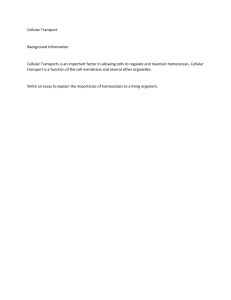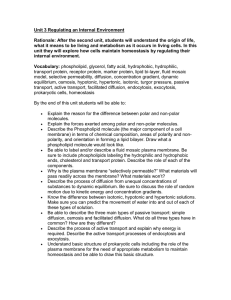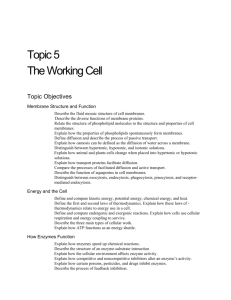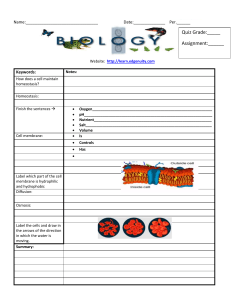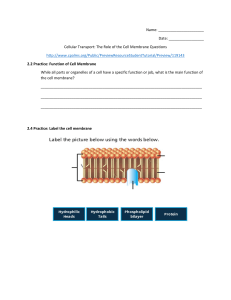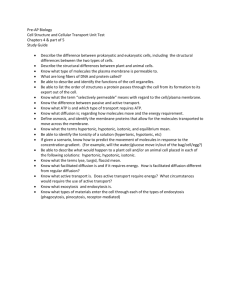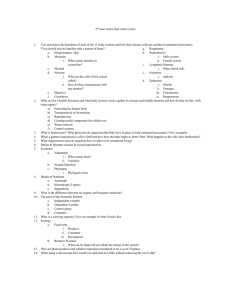Cell Biology Reading Guide: Chapter 7
advertisement
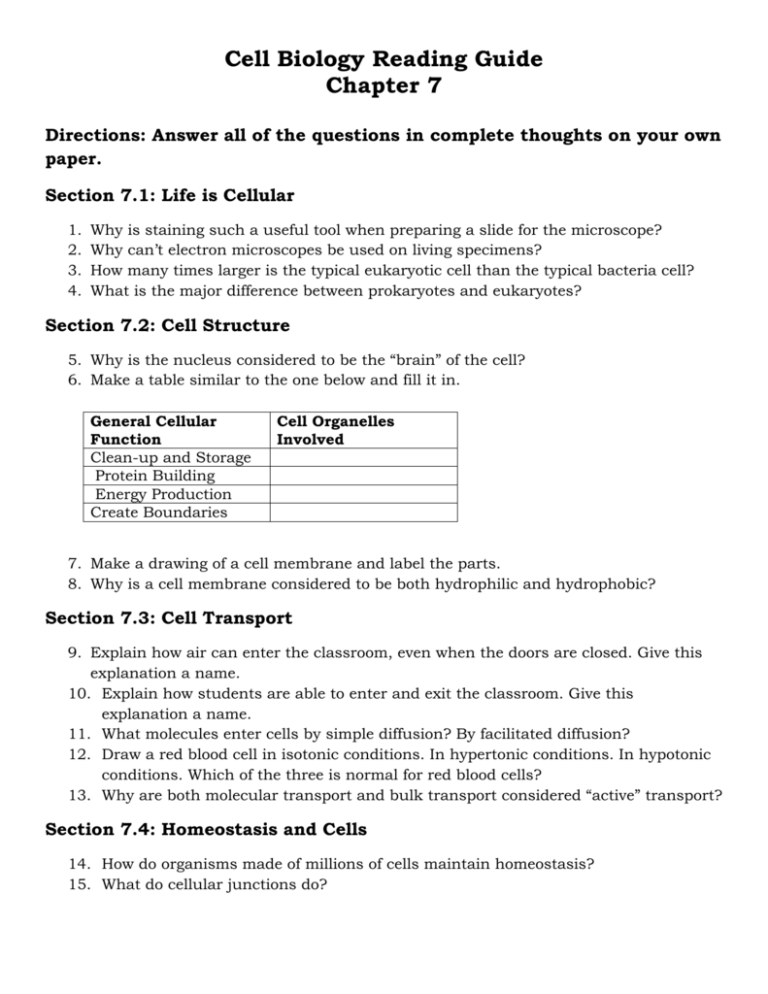
Cell Biology Reading Guide Chapter 7 Directions: Answer all of the questions in complete thoughts on your own paper. Section 7.1: Life is Cellular 1. 2. 3. 4. Why is staining such a useful tool when preparing a slide for the microscope? Why can’t electron microscopes be used on living specimens? How many times larger is the typical eukaryotic cell than the typical bacteria cell? What is the major difference between prokaryotes and eukaryotes? Section 7.2: Cell Structure 5. Why is the nucleus considered to be the “brain” of the cell? 6. Make a table similar to the one below and fill it in. General Cellular Function Clean-up and Storage Protein Building Energy Production Create Boundaries Cell Organelles Involved 7. Make a drawing of a cell membrane and label the parts. 8. Why is a cell membrane considered to be both hydrophilic and hydrophobic? Section 7.3: Cell Transport 9. Explain how air can enter the classroom, even when the doors are closed. Give this explanation a name. 10. Explain how students are able to enter and exit the classroom. Give this explanation a name. 11. What molecules enter cells by simple diffusion? By facilitated diffusion? 12. Draw a red blood cell in isotonic conditions. In hypertonic conditions. In hypotonic conditions. Which of the three is normal for red blood cells? 13. Why are both molecular transport and bulk transport considered “active” transport? Section 7.4: Homeostasis and Cells 14. How do organisms made of millions of cells maintain homeostasis? 15. What do cellular junctions do?

